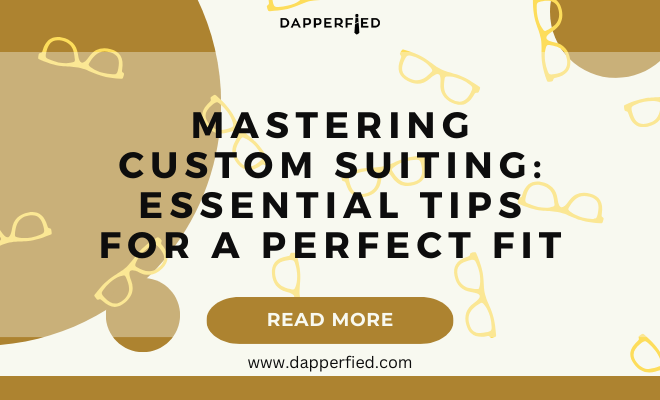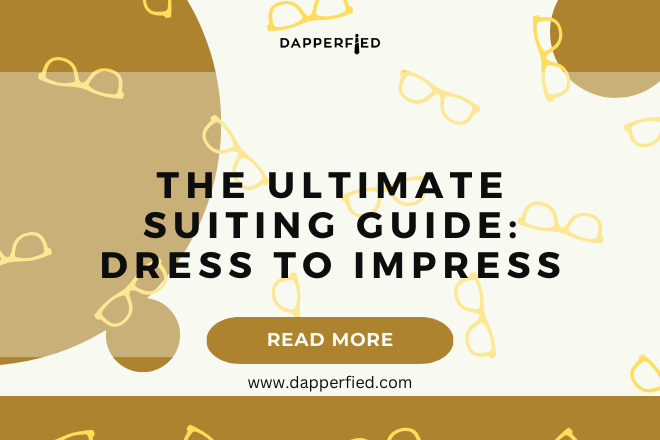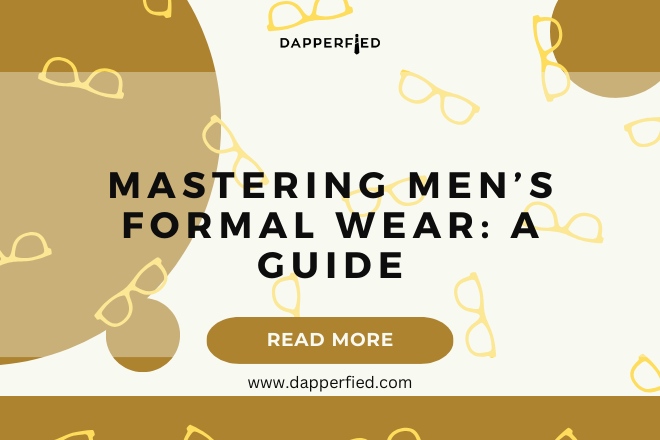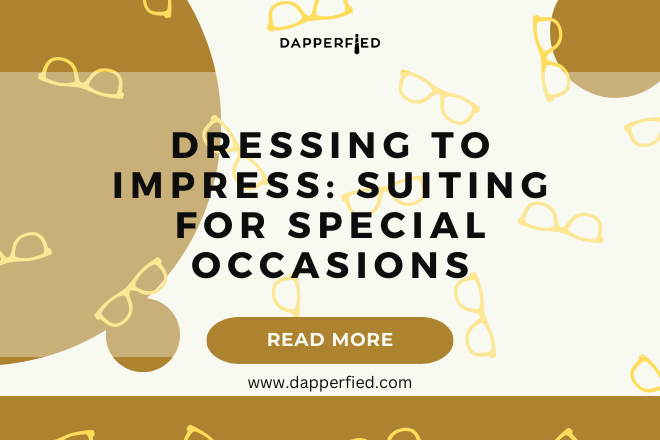
Men's Style
Mastering Custom Suiting: Essential Tips for a Perfect Fit
A well-fitted suit can have a significant impact on a man’s confidence and appearance. When a suit fits perfectly, it enhances the wearer’s physique and gives off an air of sophistication and professionalism. Custom suits are tailored specifically to an individual’s measurements, ensuring a flawless fit that cannot be achieved with off-the-rack options. Investing in a custom suit is an investment in oneself, as it can boost self-esteem and leave a lasting impression.
Custom suits offer several benefits over off-the-rack options. Firstly, they are made to measure, meaning they are crafted to fit the unique proportions of the wearer’s body. This results in a suit that drapes perfectly on the shoulders, hugs the waist, and falls just right on the legs. Off-the-rack suits, on the other hand, are mass-produced and designed to fit a range of body types, often resulting in an ill-fitting garment that requires alterations.
Additionally, custom suits allow for personalization and customization. From selecting the fabric and color to choosing the style and details, every aspect of a custom suit can be tailored to reflect the wearer’s personal style and preferences. This level of customization ensures that the suit not only fits well but also aligns with the individual’s personality and taste.
Key Takeaways
- Custom suiting is important for achieving a perfect fit and a professional look.
- When selecting a suit, consider the fabric and color to match the occasion and personal style.
- Classic, modern, and contemporary styles offer different options for men’s suiting.
- Understanding measurements and fit is crucial for a tailored suit that looks and feels great.
- Finding a quality tailor and budgeting for custom suits are important factors in suit buying.
Suit Selection Tips: Choosing the Right Fabric and Color
When selecting a fabric for a custom suit, it is important to consider the occasion and climate. For formal events or business settings, wool is a classic choice that offers durability and breathability. It is versatile enough to be worn year-round and comes in various weights to accommodate different climates.
For warmer weather or more casual occasions, lightweight fabrics such as linen or cotton blends are ideal. These fabrics offer breathability and comfort while still maintaining a polished appearance. Linen suits, in particular, have a relaxed and effortless vibe that is perfect for summer events.
When it comes to color selection, it is important to choose shades that complement the wearer’s skin tone and personal style. Classic colors such as navy, charcoal gray, and black are timeless options that work well for any occasion. They are versatile and can be easily paired with different shirts and accessories.
For those looking to make a statement or add a pop of color to their wardrobe, bolder options such as light gray, tan, or even patterned fabrics can be considered. These colors can add personality and individuality to a suit while still maintaining a professional appearance.
Men’s Suiting Styles: Classic, Modern, and Contemporary Options
There are three main suit styles to consider when investing in a custom suit: classic, modern, and contemporary.
Classic suits are timeless and never go out of style. They feature traditional elements such as notch lapels, two-button closures, and straight leg trousers. Classic suits are versatile and appropriate for a wide range of occasions, from business meetings to weddings.
Modern suits offer a more streamlined and fitted silhouette compared to classic suits. They often feature slimmer lapels, higher armholes, and tapered trousers. Modern suits are perfect for those who prefer a more tailored and fashion-forward look. They are suitable for both formal and semi-formal events.
Contemporary suits push the boundaries of traditional suiting with unique details and unconventional cuts. They may feature peak lapels, double-breasted closures, or cropped trousers. Contemporary suits are best suited for fashion-forward individuals who want to make a statement with their attire. They are ideal for events where creativity and individuality are encouraged.
Tailored Suit Guide: Understanding the Measurements and Fit
| Measurement | Definition | Ideal Fit |
|---|---|---|
| Chest | Measurement around the fullest part of the chest | Allow for a comfortable fit with no pulling or gaping |
| Waist | Measurement around the natural waistline | Should fit snugly without being too tight or loose |
| Hips | Measurement around the fullest part of the hips | Allow for a comfortable fit with no pulling or gaping |
| Sleeve Length | Measurement from the shoulder to the wrist | Should end at the base of the thumb |
| Shoulder Width | Measurement from one shoulder to the other | Should align with the natural shoulder line |
| Jacket Length | Measurement from the base of the collar to the hem | Should end at the middle of the palm |
| Pant Length | Measurement from the waist to the hem | Should break slightly at the top of the shoe |
| Thigh | Measurement around the fullest part of the thigh | Allow for a comfortable fit with no pulling or gaping |
| Inseam | Measurement from the crotch to the hem | Should end at the top of the shoe |
Proper measurements are crucial for achieving a well-fitted suit. When getting measured for a custom suit, it is important to consider several key areas:
– Chest: The chest measurement should be taken at the widest part of the chest, with the tape measure snug but not tight.
– Shoulders: The shoulder measurement should be taken from the outer edge of one shoulder to the outer edge of the other. It is important to ensure that the shoulders of the suit align with the wearer’s natural shoulder line.
– Sleeve length: The sleeve length should be measured from the shoulder seam to the desired length, typically ending at the base of the thumb.

– Waist: The waist measurement should be taken at the narrowest part of the torso, typically just above the belly button.
– Inseam: The inseam measurement should be taken from the crotch to the desired length, typically ending at the top of the shoe.
Achieving the perfect fit also involves paying attention to details such as sleeve length and trouser break. The sleeves of a suit jacket should end just above the base of the thumb, allowing for a quarter to half an inch of shirt cuff to show. The trousers should have a slight break, meaning they should rest lightly on top of the shoe without creating a heavy crease.
Suit Buying Tips: Finding a Quality Tailor and Budgeting for Custom Suits
Finding a reputable tailor is essential when investing in a custom suit. A skilled tailor will have extensive knowledge and experience in creating well-fitted suits that flatter the wearer’s body type. It is important to do thorough research and read reviews before choosing a tailor to ensure they have a good reputation and a track record of delivering high-quality garments.
Budgeting for custom suits can vary depending on several factors, including fabric choice, customization options, and the reputation of the tailor. It is important to set a realistic budget and prioritize quality over quantity. While custom suits may be more expensive than off-the-rack options, they offer superior fit and craftsmanship that can last for years with proper care.
To get the most value for your money, consider investing in versatile pieces that can be worn for a variety of occasions. Classic colors such as navy or charcoal gray are timeless and can be easily dressed up or down. Additionally, opting for high-quality fabrics and construction will ensure that the suit stands the test of time and maintains its shape and appearance.
Men’s Formal Wear: Dressing for Black Tie and Formal Events

Black tie events require a specific dress code that is more formal than everyday business attire. When dressing for a black tie event, it is important to adhere to the following guidelines:
– Suit: A black or midnight blue tuxedo is the standard choice for black tie events. The suit should be tailored to fit perfectly and should feature satin lapels and trousers with a satin stripe down the side.
– Shirt: A white dress shirt with a wingtip collar is the traditional choice for black tie events. The shirt should be crisp and well-pressed, with a pleated front or a bib front.

– Bowtie: A black bowtie is the classic choice for black tie events. It should be self-tied and properly proportioned to the wearer’s neck size.
– Accessories: Cufflinks, a pocket square, and formal shoes such as patent leather oxfords or velvet slippers complete the black tie look. It is important to keep accessories minimal and elegant.
For those looking to add a personal touch to their formal wear, consider incorporating unique accessories such as lapel pins or personalized cufflinks. These small details can add personality and individuality to an otherwise traditional outfit.
Custom Suiting for Business: Professional Attire for the Workplace
Professional attire in the workplace is essential for making a good impression and projecting a sense of competence and professionalism. When selecting business attire, it is important to consider the following tips:
– Colors: Classic colors such as navy, charcoal gray, and black are safe choices for business suits. They exude professionalism and can be easily paired with different shirts and ties.
– Fabrics: Wool is the go-to fabric for business suits as it offers durability and breathability. It is versatile enough to be worn year-round and can withstand the demands of a busy workday.
– Fit: Business suits should have a tailored fit that is neither too tight nor too loose. The shoulders should align with the wearer’s natural shoulder line, and the trousers should have a slight break.
– Details: Keep details minimal and understated in a business setting. Opt for classic elements such as notch lapels, two-button closures, and straight leg trousers.
It is important to dress appropriately for the specific industry and company culture. Some workplaces may have more relaxed dress codes that allow for more casual attire, while others may require a more formal approach. It is always better to err on the side of being slightly overdressed rather than underdressed in a professional setting.
Personalizing Your Suit: Adding Custom Details and Accessories
Personalizing a suit is an opportunity to showcase individual style and taste. There are several ways to add custom details and accessories to a suit:
– Lapel pins: Lapel pins are small accessories that can be attached to the lapel of a suit jacket. They come in various designs and can add a touch of personality or represent a personal interest or affiliation.
– Pocket squares: Pocket squares are folded pieces of fabric that are placed in the breast pocket of a suit jacket. They come in various colors and patterns and can add a pop of color or pattern to an outfit.
– Cufflinks: Cufflinks are decorative fasteners that are used to secure the cuffs of a dress shirt. They come in various designs and materials, allowing for personalization and customization.
– Tie bars: Tie bars are clips that are used to secure a tie to the front of a dress shirt. They come in various styles and finishes and can add a polished and put-together look to an outfit.
When adding custom details and accessories, it is important to strike a balance between personal style and appropriateness for the occasion. It is always better to keep accessories minimal and understated in more formal settings, while more creative and unique accessories can be incorporated in casual or creative environments.
Caring for Your Custom Suit: Cleaning and Maintenance Tips
Proper care and maintenance are essential for ensuring the longevity of a custom suit. Here are some tips for cleaning and maintaining a suit:
– Dry cleaning: It is recommended to dry clean a suit only when necessary, as frequent dry cleaning can cause the fabric to lose its shape and color. Spot cleaning with a damp cloth or using a fabric freshener spray can help maintain the suit’s freshness between cleanings.
– Storage: When not in use, suits should be stored on wooden or padded hangers to maintain their shape. They should be hung in a well-ventilated area away from direct sunlight or moisture. It is also advisable to cover the suit with a breathable garment bag to protect it from dust and insects.
– Steaming: Steaming is a gentle way to remove wrinkles from a suit without subjecting it to the harsh heat of an iron. A handheld steamer can be used to steam the suit while it is hanging, allowing the steam to relax the fabric and remove any creases.
– Alterations: Over time, alterations may be necessary to maintain the perfect fit of a suit. It is important to address any fit issues promptly by visiting a reputable tailor who specializes in suit alterations.
By following these care and maintenance tips, a custom suit can last for many years and continue to look sharp and well-fitted.
Mastering the Art of Custom Suiting
Investing in a well-fitted custom suit is an investment in oneself. A perfectly tailored suit can boost confidence, enhance appearance, and leave a lasting impression. Custom suits offer several benefits over off-the-rack options, including a flawless fit and the ability to personalize every aspect of the suit.
When selecting a custom suit, it is important to consider factors such as fabric choice, color selection, and style. Proper measurements and fit are crucial for achieving a well-fitted suit, and finding a reputable tailor is essential. Budgeting for custom suits should prioritize quality over quantity, as high-quality fabrics and construction ensure longevity.
Whether dressing for formal events or the workplace, custom suits can be tailored to suit any occasion. Personalizing a suit with custom details and accessories adds a touch of individuality and style. Proper care and maintenance are essential for ensuring the longevity of a custom suit.
In conclusion, mastering the art of custom suiting requires time, effort, and attention to detail. By taking the time to find a reputable tailor and investing in a well-fitted suit, individuals can elevate their style and make a lasting impression in any setting.
If you’re looking to up your style game beyond custom suiting, you’ll definitely want to check out this article on men’s fashion jeans tips. It’s packed with valuable advice on how to find the perfect pair of jeans that not only fit well but also complement your personal style. From understanding different denim washes to choosing the right fit for your body type, this article covers it all. So, if you’re ready to elevate your casual wardrobe, click here to read more: Men’s Fashion Jeans Tips.
FAQs
What is custom suiting?
Custom suiting refers to the process of creating a suit that is tailored specifically to an individual’s measurements and preferences. This involves selecting the fabric, style, and details of the suit to create a unique and personalized garment.
Why should I invest in custom suiting?
Investing in custom suiting ensures that you have a suit that fits you perfectly and is tailored to your individual style and preferences. This can enhance your overall appearance and confidence, as well as provide long-lasting durability and comfort.
What should I consider when selecting a fabric for my custom suit?
When selecting a fabric for your custom suit, consider factors such as the weight, texture, and color of the fabric. You should also consider the occasion for which you will be wearing the suit, as well as your personal style and preferences.
What are some common styles of custom suits?
Common styles of custom suits include single-breasted and double-breasted suits, as well as two-piece and three-piece suits. Other style options include lapel style, pocket style, and button style.
How long does the custom suiting process take?
The custom suiting process can take anywhere from a few weeks to several months, depending on the complexity of the suit and the availability of the tailor. It is important to plan ahead and allow enough time for the process to be completed.
How much does custom suiting typically cost?
The cost of custom suiting can vary widely depending on factors such as the fabric, style, and complexity of the suit. Generally, custom suits can range from a few hundred dollars to several thousand dollars. It is important to discuss pricing with your tailor before beginning the process.




















